SpaceNews established these awards five years ago to recognize achievements in space commerce, exploration and stewardship. Since 2017, SpaceNews journalists have selected 40 individuals and organizations embodying the hard work and innovation propelling the space industry to the unparalleled levels of activity we are now witnessing.
In 2021, we saw a record number of private astronauts making their way to space, with more than 20 individuals going up and back on orbital and suborbital flights not conducted on behalf of governments.
We have also seen record numbers of space startups making their way to Wall Street via mergers with blank check companies, or SPACs, attracting billions of dollars from investors undaunted by a tenacious global pandemic.
And we continue to see record numbers of satellites launching to orbit, the upshot of an entrenched smallsat revolution driving even the most hidebound institutions to rewrite their playbooks.
Alongside all of this, we are seeing growing concern about space sustainability driven by not just those record numbers of satellites but also slow progress on space traffic management and a Russian ASAT test that created thousands of pieces of debris in low Earth orbit.
In such a remarkable year for commercial, civil and military space, picking winners wasn’t easy. In the end, SpaceNews editors, reporters and trusted advisers agreed on nine individuals, organizations and trends deserving recognition.
sponsored by
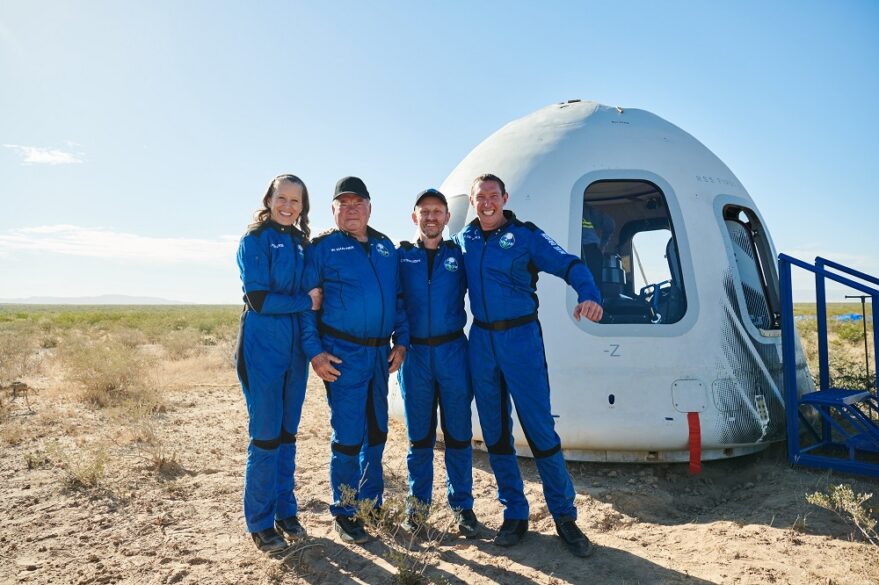
PRIVATE ASTRONAUTS
A Dutch teenager. A pediatric cancer survivor. An aviation pioneer. A famous actor. And a few billionaires, too.
What these people have in common is that they all went to space this year without the assistance of government space agencies. For decades, commercial human spaceflight, aka space tourism, had promised to open up space for the wider public, not just professional astronauts. But the promise of space tourism had long been just that: something that remained just around the corner. The Ansari X Prize competition and the occasional tourist flying on a Soyuz in the early 2000s seemed like a false dawn.
However, that changed in July when Virgin Galactic flew its founder, Richard Branson, to space on its SpaceShipTwo suborbital spaceplane. Nine days later, Blue Origin flew its founder, Jeff Bezos, on its New Shepard suborbital vehicle. In September, SpaceX’s Crew Dragon, already taking astronauts to the International Space Station for NASA, made its first commercial flight on the three-day Inspiration4 mission. New Shepard flew again in October at the same time a Russian actress and film director were in the middle of a 12-day stay on the ISS, filming scenes for a movie.
The long-awaited emergence of private human spaceflight has led some to hail the “democratization” of space, but that’s not quite accurate. Unless you’re fortunate enough to be a contest winner or a guest of a company, you’ll have to pay large sums of money to fly. After flying Branson, Virgin Galactic raised its prices to $450,000 — and still managed to sell 100 tickets in a matter of months.
What commercial human spaceflight has demonstrated is the diversification of space, with a much wider range of people able to go. Blue Origin’s first crewed flight set records for both the youngest person to go to space, 18-year-old Oliver Daemen, and the oldest, 82-year-old Wally Funk. Her record lasted less than two months, broken on the second crewed New Shepard flight by 90-year-old William Shatner, Star Trek’s Captain Kirk. Hayley Arceneaux, part of the Inspiration4 mission, survived bone cancer as a child and flew despite having a titanium prosthetic in her leg.
The pace of private human spaceflight shows no sign of letting up. Blue Origin will fly again in December with a six-person crew while Japanese billionaire Yusaku Maezawa and an assistant to the ISS in a flight arranged by Space Adventures. In February, Axiom Space will send a four-person crew to the ISS on a Crew Dragon. It turns out that a lot of people have The Right Stuff.
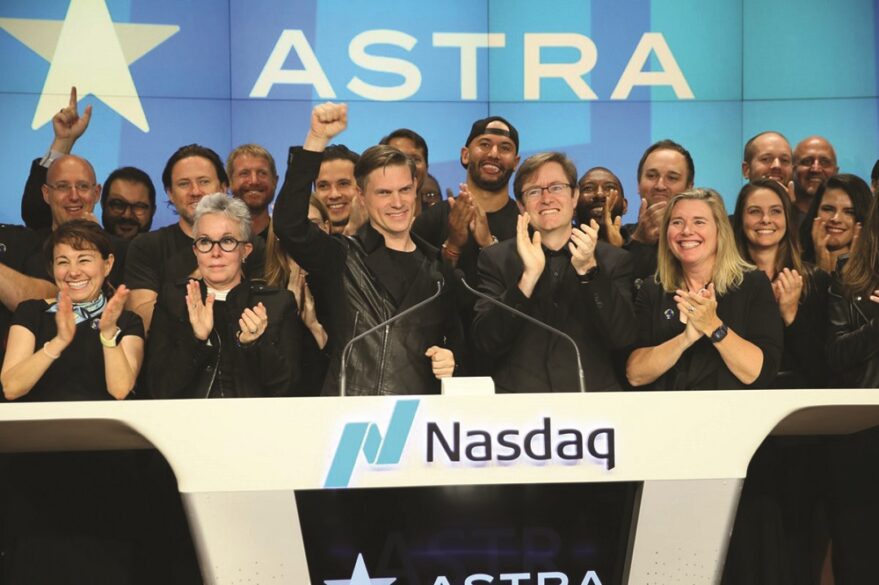
SPAC MERGERS
Over the last several years, billions of dollars of venture capital investment flowed into the space industry, from small seed rounds for startups to massive raises by OneWeb, Sierra Space, and SpaceX. That activity, though, did not extend to Wall Street: there were no “pure-play” space companies on public markets, and space was a tiny part of large publicly traded aerospace companies like Boeing and Lockheed Martin. “We had a lot of investors say, ‘Space is interesting, but there’s no way for us to invest,’” recalled Phil Ingle, a managing director at Morgan Stanley.
That changed in 2021, thanks to a once-obscure vehicle called a special purpose acquisition corporation (SPAC). Such “blank check” companies go public, then merge with a privately held company. The merged company can raise money and start trading on a stock exchange faster than a traditional initial public offering.
SPACs are not new: Iridium went public through a SPAC merger in 2009. But interest in SPACs started growing in 2019 when Virgin Galactic went public in a SPAC deal. By early 2021, there was a steady stream of SPAC mergers across the space sector, from launch (Astra, Rocket Lab, Virgin Orbit) to imaging (BlackSky, Planet, Satellogic) to manufacturing (Redwire, Terran Orbital). Those deals turned — or will turn when they close in the coming months — those companies into public corporations, raising in some cases up to several hundred million dollars each.
SPACs have become polarizing. Some see them as a fast way for companies to raise money and go public. They argue that being on the stock market makes it easier to entice employees with stock options and use the stock as currency to acquire other companies. But the marketwide SPAC mania this year, critics argue, encourages companies to go public prematurely, in some cases before they generate any revenue, let alone profit. They can also spotlight problems, such as in-space transportation startup Momentus which saw its SPAC merger delayed and scaled back because of its Russian co-founders.
Interest in SPACs waned later in 2021 after scrutiny from the Securities and Exchange Commission. The number and size of mergers declined, while redemption rates — where SPAC shareholders ask for their money back rather than hold shares in the merged company — went up. However, there will soon be at least a dozen pure-play space companies traded publicly, whose success or failure could shape broader market perceptions of the space industry.
Those SPACs have already had an impact, Ingle said, by providing access to a wider range of investors. “There are pure-play space opportunities, and you’re actually seeing Wall Street focus on the sector,” Ingle said. “Wall Street views this as an investable sector now. They view an opportunity to make money here.”
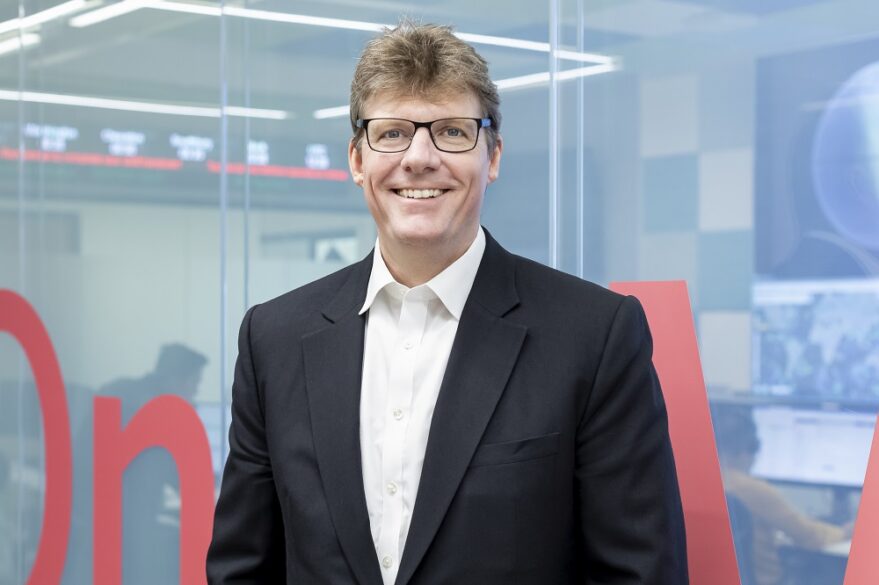
NEIL MASTERSON
Neil Masterson came from outside the space industry to take OneWeb’s reins just over a year ago, successfully leading the satellite broadband startup from bankruptcy to funding surplus as the pandemic continues to rock the industry.
OneWeb had collapsed into Chapter 11 protection in March 2020, when the $3.4 billion it had raised since 2015 ran out after deploying just 74 satellites of a planned 648-strong constellation.
The British government and Indian telecom giant Bharti Global soon agreed to rescue OneWeb from bankruptcy with $1 billion in fresh funding. However, OneWeb still faced an uphill climb to cover the projected $2.4 billion post-bankruptcy cost for finishing the constellation. And it would have to secure this funding amid markets still shaky from the COVID-19 pandemic.
That’s when Masterson took over. In November 2020, on the same day OneWeb exited Chapter 11, the company announced Masterson’s appointment as CEO. A Brit who started his career in finance and rose to COO during 20 years with global media company Thomson Reuters, Masterson had no prior space experience.
But it wasn’t necessarily the chance to venture into space that drew him to OneWeb and its plans to bridge a global digital divide with hundreds of broadband satellites in low Earth orbit. “Throughout my career, I’ve always been fascinated by the power of technology to bring people together — to help people learn, connect them with loved ones or facilitate the growth of businesses,” Masterson says.
COVID-19 proved to be a double-edged sword for OneWeb. While the pandemic made fundraising significantly more challenging, it also highlighted the importance of connectivity amid widespread shelter-in-place orders.
Starting a new job in the middle of a pandemic was “a bit strange,” Masterson notes — it would be some time before he would physically meet much of the team around him. However, he had barely started his new role when OneWeb resumed its launch campaign last December with another batch of 36 satellites sent to LEO.
Over the next 10 months, OneWeb launched seven more times to amass 358 satellites in orbit — enough satellites to enter beta testing and more than halfway to the number needed to roll out high-speed network services globally in 2022. OneWeb expects to launch four more times by the end of February to grow its constellation by another 136 satellites.
As OneWeb’s constellation expanded over the past year, so has its mix of international and strategic investors. U.S.-based Hughes, one of OneWeb’s original backers, and Japan’s SoftBank, which led a $1.2 billion round in 2016, have made fresh investments since Masterson took over. Hanwha of South Korea and French satellite operator Eutelsat also came in as investors, with Eutelsat later increasing its stake to become OneWeb’s second-largest shareholder after Bharti.
In total, OneWeb has announced about $2.9 billion in funding since late 2020, some $500 million more than it has said it needs to get its initial 648 satellites in orbit.
SPACE DEVELOPMENT AGENCY
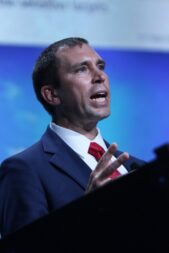
When the Pentagon created the Space Development Agency in 2019 to stake out a new satellite architecture for the military, SDA chose as its motto Semper Citius, Latin for “always faster.” In less than three years since its inception, the SDA has launched its first experimental payloads and is on track to deploy in 2022 the first batch of satellites of a low Earth orbit constellation known as the Transport Layer.
SDA plans to build a network of hundreds of interconnected satellites by 2026, a pace rarely seen in military acquisitions. A typical DoD space program takes a decade or longer from conception until the first satellite reaches the launch pad. SDA wants to break that mold as it looks to modernize DoD’s space architecture and, in the process, rewrite the military’s playbook for procuring satellites.
SDA has proven a disruptive force in military space procurement by embracing the concept of “proliferation” — deploying relatively low-cost satellites in large numbers to deliver critical military services. DoD typically has favored smaller constellations of costlier, more complex satellites.
If all goes to plan, SDA will launch into orbit an assortment of satellites made by a variety of contractors. While most military satellite programs spend many years developing technology before fielding any hardware, SDA will launch satellites in two-year increments. This cadence allows the insertion of new capabilities and provides opportunities for vendors to compete for contracts every two years.
SDA’s proliferated space architecture was initially met with skepticism. DoD satellites historically have cost hundreds of millions of dollars each, but SDA Director Derek Tournear persuaded Pentagon leaders that this new space architecture would be affordable. SDA will buy satellites from existing commercial production lines at prices on the order of about $20 million each.
It’s no surprise that SDA’s departure from DoD’s traditional procurement culture has sparked challenges. Some contractors have filed bid protests with the Government Accountability Office contesting SDA’s solicitations. The agency in each case was able to make swift adjustments and get the protests dismissed. So far, Tournear said, programs remain on schedule despite these setbacks.
A looming concern for SDA is a congressionally mandated reorganization. SDA currently is a stand-alone agency that reports to the Office of the Under Secretary of Defense for Research and Engineering, allowing SDA to operate as a relatively independent buyer. By October 2022, SDA will be under the Space Force.
Tournear, named SDA director in June 2019, said he expects continuity despite potential disruptions caused by the reorganization.
Maintaining a steady pace is key to the agency’s goal of creating a predictable market for satellite manufacturers and payload providers. Being a reliable customer is essential since SDA needs to tap industry-funded innovation.
“No government agency has moved more quickly than SDA,” said Chuck Beames, chairman of the SmallSat Alliance. “Satellites will be operational on orbit in less than two years from contract award, something that has notoriously taken a decade or longer.”
Beames is hopeful SDA’s culture will permeate all military space procurements when the agency is folded into the Space Force.
VOYAGER SPACE

In a year dominated by SPAC mergers pumping billions into early-stage space firms taking the fast track to public markets, privately owned Voyager Space stands out as a sorely needed source of patient capital.
Although SPACs deserve much of 2021’s limelight for giving everyday investors the chance to hold space shares, Voyager Space has been playing an important role for small businesses that aren’t flashy enough to attract venture capital firms hunting for billion-dollar valuations.
The Denver-based group has made six acquisitions since embarking on a mission three years ago to build out a vertically integrated space exploration company, with the goal of eventually trading on a public market as a combined entity.
Starting with space technology firm Altius Space Machines in October 2019, Voyager Space has since snapped up The Launch Company, Nanoracks, Pioneer Astronautics, Valley Tech Systems and, most recently, a majority stake in electronics and satellite components supplier Space Micro.
Two more acquisitions could be announced by the end of January, according to 51-year-old co-founder Dylan Taylor, who leads the group as chair and chief executive officer.
In addition to seeking synergies through stitching complementary companies together, Taylor says, Voyager Space was created “to better address how the industry can harness and scale” the rise of early-stage space businesses.
Even though many startups have matured to the point where they are generating revenues and profits, he says a number of them are in danger of plateauing as small companies. The wheels typically start to wobble when a company reaches 100 employees, according to Taylor. “I think we have a lot of companies stuck at that sort of 100-employee level, but nobody has really done a good job of aggregating capability in such a way that you have large company scale, like you do with the primes, but you still have the innovative entrepreneurial spirit,” he says.
Through a group like Voyager Space, he says, space startups can share back-office and other functions to save costs and free themselves up for further growth.
SHUNNING SPACS
Florida-headquartered Redwire has also been acquiring a series of space technology companies to build scale, but unlike Voyager Space recently merged with a SPAC to become a public company in a deal valuing it at $620 million.
Although Taylor says Voyager Space’s goal is to list on a public stock market in the first half of 2022 through a traditional — and typically slower — initial public offering process, he’s quick to stress there’s nothing wrong with the SPAC approach. “I’m not anti-SPAC, I just don’t think it’s the best path for us right now,” he says.
“What I tell my team is getting public is actually the easy part. The hard part is having a high-quality public company, and to have a high-quality public company you need the right people, the right infrastructure and the right processes.”
These components that are needed to be a successful public company aren’t necessarily in place when inheriting a SPAC shell, he warns, pointing to how “certain companies that are delaying their earnings releases” are suggesting to the market that they have yet to get their ducks in the row.
“One thing the public markets do not like is uncertainty,” he says. “So, you know, if you have a high-quality company, you can take a SPAC, that’s not a problem, but then it kind of begs the question, why not take it public … the old-fashioned way?”

PATTI GRACE SMITH FELLOWSHIP
It’s been just over a year since the Patti Grace Smith Fellowship was established, and the nonprofit’s impact is already apparent.
An inaugural class of 43 undergraduates held paid summer internships, established relationships with mentors, and received cash grants to help cover tuition and other expenses.
The interns, known as Patties, were welcomed into an impressive group of aviation and space companies, ranging from industry giants Airbus, Boeing, and Northrop Grumman to relative newcomers Blue Origin, Relativity, and SpaceX. Demand for Patties was so high that prospective employers joined a wait list.
The aerospace sector is increasingly aware of its lack of diversity. Black people make up about 12 percent of the U.S. population and 15 percent of college undergraduates, but only about six percent of aerospace workers and three percent of the sector’s managers.
The Patti Grace Smith Fellowship is tackling the problem head-on by establishing a pathway to an aerospace career for first- and second-year Black undergrads who have never worked in the industry.
Entering a predominantly white field can be daunting for students. In addition to providing work experience and mentorship, the Fellowship creates a network for newcomers and “shows an industry that feels as if there aren’t diverse candidates that they are indeed out there,” said Khristian Jones, Patti Grace Smith Fellowship co-founder and Virgin Galactic associate materials and processes engineer.
Patties and their mentors meet one-on-one online and assemble as a group for an annual summit. Because of the COVID-19 pandemic, 2021 internships and the summit were held online.
“We were able to give our students a sense of community and a network by exposing them to folks that were in their same predicament,” said Tiffany Lockett, an engineer at the NASA Marshall Space Flight Center and Patti Grace Smith Fellowship co-founder. “They’re all virtual. They’re all over the country. And they are all really excited about working in aerospace.”
The Patti Grace Smith Fellowship is a spinoff of the Brooke Owens Fellowship established in 2016 to open doors to aerospace careers for women and gender minorities. Like the Brooke Owens Fellowship, the Patti Grace Smith Fellowship is competitive.
Before being selected, prospective Patties interview with Fellowship founders and volunteers. Finalists then undergo a second round of interviews with potential employers.
The Fellowship was named for the former head of the U.S. Federal Aviation Administration’s Office of Commercial Space Transportation. Raised in Tuskegee, Alabama, Patti Grace Smith and her sister were among the dozen students who helped integrate their local public high school. Patti Grace Smith went on to earn a bachelor’s degree at the Tuskegee Institute, before beginning a career in broadcasting.
After working for the National Association of Broadcasters, Smith began a 28-year career in government service. During her 11-year tenure at the FAA, Smith oversaw licensing of commercial spaceports, commercial human spaceflight and privately developed rockets. She died in 2016 at age 68.
The Patti Grace Smith Fellowship was founded in 2020 by Jones, Lockett, B. Alvin Drew Jr., a former NASA astronaut and U.S. Air Force officer, and Will Pomerantz, Virgin Orbit vice president special projects.
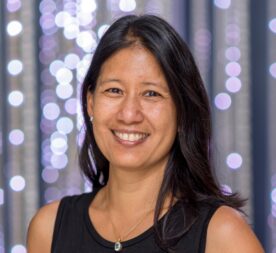
MIMI AUNG
When MiMi Aung jumped out of her seat at the NASA Jet Propulsion Laboratory to celebrate the initial, three-meter flight of Ingenuity, the public cheered along both because the feat was extraordinary and because the Mars Helicopter project manager’s enthusiasm was contagious.
With every television, radio and podcast interview, Aung recounts with obvious delight how dozens of people toiled for six years leading up to the first powered off-world aircraft flight. It was no easy feat.
When JPL Director Charles Elachi first proposed autonomous flight on Mars in 2012, no one knew whether a helicopter could generate enough lift in an atmosphere less than one percent as dense as Earth’s. Even when JPL engineers determined lift was possible, Ingenuity posed myriad challenges.
The Mars Helicopter’s 1.8 kilogram weight limit was firm, but it needed significant power. To take flight on the Red Planet, Ingenuity’s carbon-fiber rotor blades would need to spin about 2,400 revolutions per minute, far faster than conventional helicopter rotors.
Another hurdle was autonomy. With an 11-minute delay, controlling Ingenuity from Earth was out of the question.
“MiMi Aung brought her skills, abilities and most importantly her unshakeable desire to, what many thought was impossible, fly on Mars for the very first time!” Jim Green, NASA chief scientist, said by email. Aung assembled a team of scientists, engineers and technicians from inside and outside JPL. AeroVironment, SolAero and Lockheed Martin contributed expertise, as did the NASA Ames and NASA Langley Research Centers.
“I really believe in the technical diversity and technical responsibility,” Aung told Green in an interview for the July 9 installment of NASA’s “Gravity Assist” podcast. “There is no hierarchy, which means everybody really needs to respect the system and everybody has to respect everybody else.”
Ingenuity has been a great success since its first flight on April 19. Although designed as a technology demonstration, Ingenuity now performs an operation role, capturing images of potential sample sites for NASA’s Perseverance Rover.
Aung, meanwhile, has moved on to Amazon to work on Project Kuiper, the retail giant’s campaign to extend broadband globally via satellite.
Aung earned bachelor’s and master’s degrees in electrical engineering at the University of Illinois, Urbana-Champaign. Right out of school, Aung went to work at JPL, developing and testing algorithms for the Deep Space Network’s first digital receiver.
Before leading the Mars Helicopter mission, Aung served as deputy manager of JPL’s Autonomous Systems Division. Leaving that steady job for a technology demonstration was a risk, but Aung was passionate “about this chance to fly something in the atmosphere of another planet outside of Earth,” she told Green.
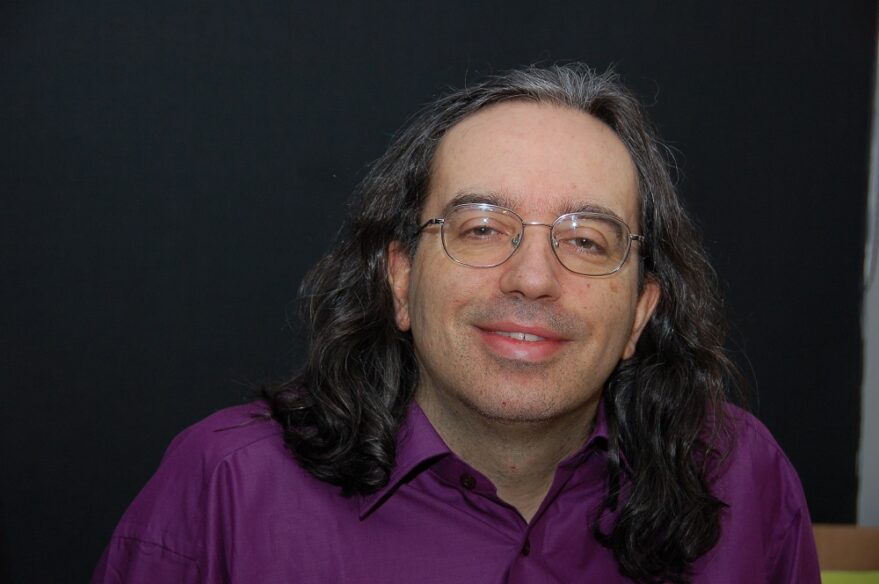
JONATHAN McDOWELL
When NASA announced Nov. 15 that the International Space Station crew was closing hatches and taking shelter in crew vehicles because of the threat posed by a new cloud of debris, Jonathan McDowell sprang into action.
McDowell quickly matched a Russian notice to airmen from Plesetsk Cosmodrome with the orbit of Kosmos-1408, a defunct Soviet satellite, and the ISS orbit to suggest the debris could be the result of a test of Russia’s Nudol anti-satellite weapon.
Even on the day the U.S. State Department later confirmed the Russian anti-satellite test, McDowell continued to field calls from reporters asking about a variety of topics like the SpaceX Starlink broadband constellation and asteroid mining.
Why is McDowell such a trusted source for reporters and space enthusiasts? With no corporate ties, McDowell speaks his mind with refreshing candor. And although he has been in the United States since the 1980s, his childhood and education in England give him an international perspective. McDowell earned a master’s degree in mathematics and a PhD in astrophysics from the University of Cambridge.
By day, McDowell supports the Chandra X-ray Center Science Data System at the Harvard-Smithsonian Center for Astrophysics. There, he leads a group that helps astronomers find the software they need to analyze data from Chandra, a NASA flagship mission launched in 1999. The group also tests new software, documents its findings and serves as the help desk for scientists around the world using Chandra data in their research.
McDowell said his job is to ask, “How can we find new and better ways to get science out of the data of Chandra and satellites like Chandra.”
In his spare time, McDowell acts as the space sector’s unofficial chronicler of record. Since 1989, McDowell has published “Jonathan’s Space Report,” a monthly compilation of international space launches.
“The Space Report,” though, is just the tip of the iceberg. McDowell has been making lists of satellites launched since he was 12 due in part to frustration with the English media’s lack of space coverage. Nearly 50 years later, he manages one of the world’s most extensive databases of space history.
“I’m writing for an audience 1,000 years from now,” McDowell said. “I’m writing for the historian who is fascinated by the early years of the space program and wants to reconstruct what happened, how we became a multiplanetary species.”
McDowell’s fascination with space began early thanks to Doctor Who, the British television series about an extraterrestrial time traveler, and books by Antoine de Saint-Exupéry, Isaac Asimov and Arthur C. Clarke. During his childhood, McDowell also was surrounded by scientists including his father, a physicist who spent a year on sabbatical at the NASA Goddard Space Flight Center outside Washington.
“I was already a space cadet before we went to NASA, but being a seven-year-old running up and down the corridors of NASA Goddard the year before the moon landing, that was what really got me into it,” McDowell said.
SpaceNews is not the first organization to recognize McDowell’s unique contributions. He is a fellow of the Royal Astronomical Society and the American Astronomical Society. He is a recipient of the Sir Arthur Clarke Award for individual space achievement, a French Astronomical Society prize for contributions to astronautics culture and popularization, and a Royal Aeronautical Society award for service to the space industry.
The International Astronomical Union even named an asteroid in his honor. Planet 4589, also known as McDowell, resides in the solar system’s main asteroid belt.
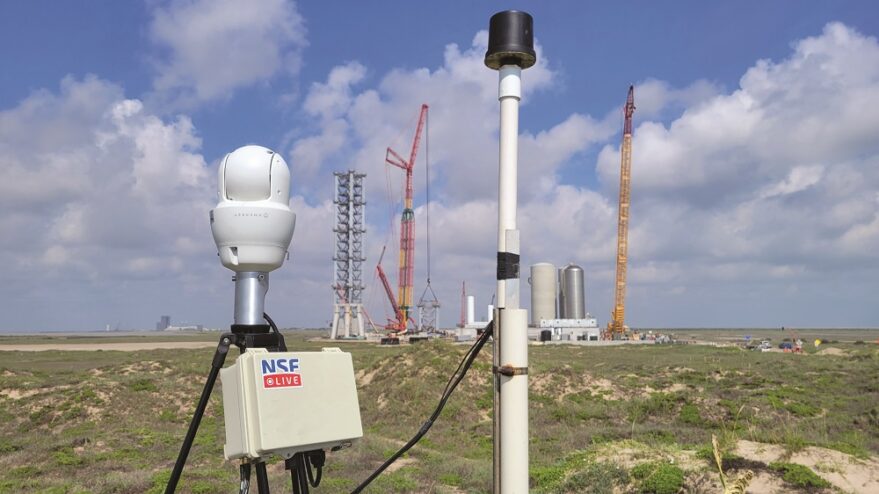
NASASPACEFLIGHT.COM
SpaceX is often praised for being open about the development of its Starship launch vehicle in Texas, but that is not the full picture. The company shares little official information about progress on Starship, with most of the details coming from tweets or other comments by founder Elon Musk. Instead, that openness refers to the fact that much of SpaceX’s work in Boca Chica is done outdoors, able to be tracked by anyone with the ability and interest— and patience—to keep tabs on vehicle and launch site construction work.
One of the leaders in that effort is NASASpaceFlight.com. Initially known for its discussion forum and detailed articles, the site has built up a webcasting capability to monitor SpaceX’s activities at Boca Chica 24 hours a day, seven days a week. That includes broadcasts not just of Starship test flights but also static fire and other tests, such as one in May 2020 that destroyed a Starship prototype before it got a chance to fly. NASASpaceFlight.com’s video team provides commentary informed by experiencing past tests, while also answering questions from viewers about what’s going on.
NASASpaceFlight.com isn’t alone in tracking SpaceX’s activities at Boca Chica, but what sets it apart is the breadth and depth of its activities. In addition to its thorough coverage in Texas, it broadcasts launches by SpaceX and others from Florida and California. A “Fleetcam” provides continuous video from Port Canaveral, keeping track of the arrivals and departures of SpaceX’s fleet of droneships and recovery vessels.
One of its highlights was in December 2020, when Virgin Galactic conducted a SpaceShipTwo test flight from Spaceport America in New Mexico. The spaceport was closed to the media because of the pandemic, and the company announced it would not broadcast the flight. NASASpaceFlight.com’s Jack Beyer, equipped with a camera and a mobile hotspot, set up on a public road near the spaceport to cover the takeoff, then got in position to see the release of SpaceShipTwo from its WhiteKnightTwo aircraft. It was the only site offering live video of SpaceShipTwo’s release and aborted engine firing, which grounded the vehicle for five months.
Some companies are now working with NASASpaceFlight. com. Small launch vehicle developer Astra partnered with the site to webcast its two most recent launch attempts, including its first successful orbital launch in November. Meanwhile, its cameras continue to monitor SpaceX’s activities in Boca Chica as the company prepares for the first orbital flights of Starship. They’ll be watching whether the rocket goes up or blows up.
This article originally appeared in the December 2021 issue of SpaceNews magazine.

